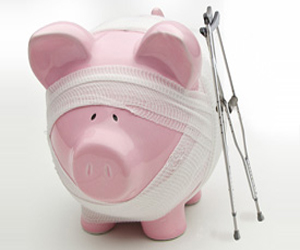Send this article to a friend:
July
03
2025
Send this article to a friend: July |
The Last Time Gold Moved Like This Was 1929
In recent times, we have seen things compared often to infamous economic downturns, like the inflation and recession of the 1970s. We have also seen invocations of the Great Depression when the lockdowns happened, and gold accordingly leapt in massive bounds back then. But these days, the price of gold is nearly doubled since the start of the lockdowns, so there might very well be something to MacLeod's idea. Rather than buying into the narrative that reopenings prevented a 1929-style economic environment, Macleod thinks we are merely in the opening acts of a new global economic depression. Macleod calls it the U.S. debt trap, mentioning how gold might have already overtaken U.S. dollars in terms of central bank reserves. As I’ve mentioned frequently since 2022, appetite for long-term U.S. government debt is hitting historical lows. Very few entities are willing to wager that the U.S. dollar, in 20-30 years, will still be a desirable asset. The economy isn't growing anymore (and there are questions of whether it can), and an annual budget deficit of 6%+ means stagnation is a serious concern. Somewhat touching upon our own idea of a disassociation between gold and armed conflict, Macleod says that U.S. dollar and debt are actually the preferred safe haven during such times. This, in turn, makes the U.S. economy even more vulnerable if or when the threat of that military conflict subsides, as investors then start moving out of U.S. assets. Looking back on it now, Macleod believes that the narrative of China dedollarizing to boost the yuan was just a way of making the dollar look better in comparison. We are seeing that unfold month after month, as a recent report detailed how 32% of central banks are expected to buy gold just in the short-term. As both the report and Macleod note, the situation is so bad that central banks are even taking on other currencies as reserves, so long as it means less exposure to the dollar. Besides being under-owned, Macleod's analysis of COMEX open interest suggests that gold might still be underbought, making the climb to $3,500 all the more remarkable. This is the first time since 1977 that U.S. assets have all broadly fallen in conjunction while gold has gone up, but, as said, 1929 might be a closer comparison. Central banks are buying gold because they have a vision of the future, and this vision doesn't appear to involve the currencies they print having any real money. Macleod is also one of the many analysts convinced that China's gold heap exceeds 30,000 tons, and he also says that silver is not to be overlooked here. He says that informed accusations of silver price suppression go back more than two decades, with JPMorgan being consistently listed as a key culprit. The idea, he notes, is to artificially deflate silver's spot price to sell massive amounts of the physical variety. But to whom? China is again pointed to, with Macleod saying that China's silver reserves might be even more stupefying than their gold stockpile. He reminds us that the Shanghai Gold Exchange is wholly owned by the PBoC and appears to exist primarily as an instrument for the state to acquire more bullion while suppressing reports of purchases. Although he says gold might be starting its summer doldrums, it's interesting to note that it's double the price of its summer doldrums from two years back. Not much has changed in terms of fundamentals since then, so we have to ask what investors can expect over the next two years. And, if we are indeed in a not-so-hidden 1929-style environment, what can gold investors in turn expect over the coming decade?
www.birchgold.com |
Send this article to a friend:
 |
 |
 |